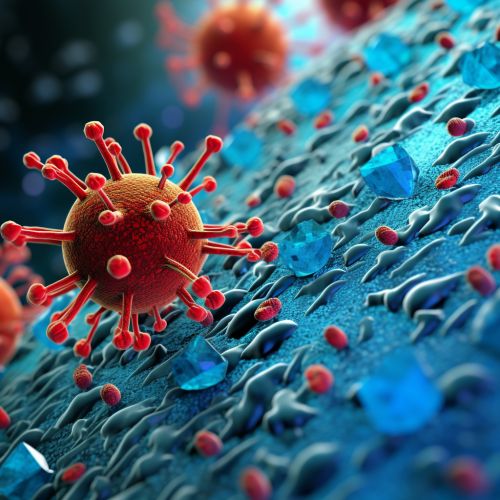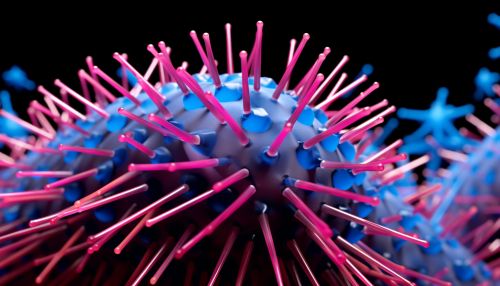Influenzavirus A
Overview
Influenzavirus A is a genus of the Orthomyxoviridae family of viruses, and is responsible for causing influenza in birds and some mammals, including humans. Influenzavirus A is a significant pathogen for both human and animal health, and has been the cause of several pandemics throughout history. The virus is characterized by its segmented genome, which allows for genetic reassortment and the emergence of novel strains.
Structure and Composition
Influenzavirus A is an enveloped virus, meaning it is surrounded by a lipid bilayer derived from the host cell membrane. This envelope contains two important glycoproteins, hemagglutinin (H) and neuraminidase (N), which are critical for the virus's ability to infect host cells. The virus also contains a matrix protein (M1) that provides structural support to the virus particle.


Inside the envelope, the virus has a segmented genome composed of eight single-stranded RNA segments. These segments encode for up to 13 proteins, including the aforementioned H, N, and M1 proteins, as well as several non-structural proteins that are involved in the virus's replication cycle.
Classification
Influenzavirus A strains are classified based on the subtypes of the H and N glycoproteins. There are 18 known H subtypes and 11 known N subtypes. The H and N subtypes are antigenically distinct, meaning that antibodies against one subtype do not provide protection against other subtypes. This is one of the reasons why influenza vaccines need to be updated annually.
Replication Cycle
The replication cycle of Influenzavirus A begins with the virus binding to sialic acid receptors on the surface of a host cell. This binding triggers endocytosis, a process by which the cell engulfs the virus and brings it inside. Once inside the cell, the virus uses the host's cellular machinery to replicate its genome and produce new virus particles. These new particles are then released from the cell to infect other cells.
Pathogenesis and Immunity
In humans, Influenzavirus A primarily infects cells in the respiratory tract, causing symptoms such as fever, cough, and body aches. The virus can also cause more severe disease, including pneumonia and acute respiratory distress syndrome, particularly in individuals with weakened immune systems or other underlying health conditions.
The immune response to Influenzavirus A involves both the innate and adaptive immune systems. The innate immune response is the body's first line of defense and involves cells such as macrophages and dendritic cells that recognize and respond to the virus. The adaptive immune response involves the production of antibodies by B cells and the activation of T cells, which can kill infected cells and provide long-term immunity.
Epidemiology
Influenzavirus A is a major cause of seasonal influenza epidemics, which occur annually and affect millions of people worldwide. The virus is also responsible for occasional pandemics, which occur when a new subtype of the virus emerges to which the global population has little to no immunity.
Prevention and Control
Vaccination is the primary method of preventing infection with Influenzavirus A. Influenza vaccines are typically trivalent or quadrivalent, meaning they contain antigens from three or four different virus strains. These strains are selected based on surveillance data predicting which strains are most likely to circulate in the upcoming influenza season.
Antiviral drugs are also available for the treatment and prevention of influenza. These drugs work by inhibiting the function of the viral neuraminidase, preventing the release of new virus particles from infected cells.
